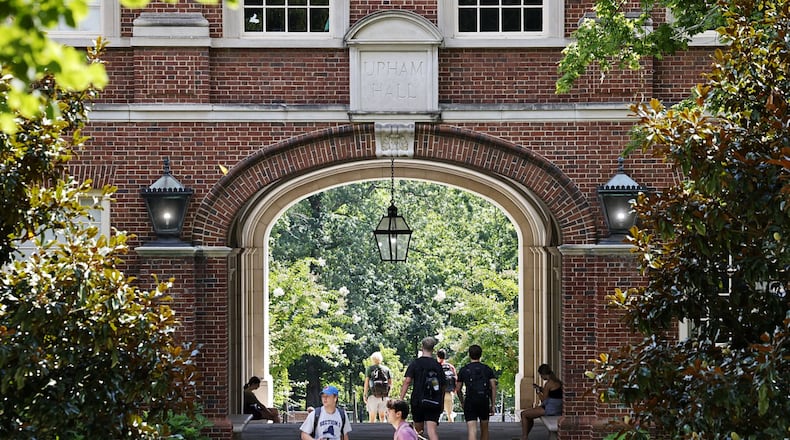New students at Miami’s regional campuses in Hamilton and Middletown will also see a 4% jump in their annual tuition under the new budget.
The average tuition rate for a first-year student in the 2023-2024 academic year on the Oxford campus will be $17,808 — an annual increase of $349, said school officials.
Non-resident students will see an increase of $1,531 for a total of $40,024 per year.
Students attending regional campuses will see an increase of $136.92 annually — up from $3,536 to $3,673 and non-resident students will see an annual increase of $358, which is up from $9,098 to $9,457.
Last school year — 2022-2023 — also saw Miami increase tuition for first-year students, citing inflation and increasing student mental health care costs.
Alecia Lipton spokeswoman for Miami University, said continuing students will see no tuition increase as provided by the school’s Miami’s Tuition Promise, which locks in tuition costs once a student has enrolled.
Once a student has begun attending Miami, the Tuition Promise Program, said Lipton, “will provide all first-Time undergraduate students and their families the certainty that tuition, room and board, special purpose fees, and course fees will be frozen over the four years of a student’s Miami experience.”
“Continuing students are not subject to an annual tuition hike,” she said.
The higher tuition for the coming school year is not related to the 2% for eligible Miami employees, said Lipton.
According to officials: “Miami department heads will determine how the pool is to be allocated to their eligible faculty and staff (of) non-union faculty and unclassified staff hired before April 1, based on meritorious performance and equity adjustments. Classified staff will receive an across-the-board increase of 2%.”
“The salary pool increase reflects the inflation rate and Miami’s promise to keep and attract highly regarded teacher-scholars and staff,” said Lipton.
Miami recently saw the state employment bureau approve for the first time both the formation of a teachers’ union and librarian union at the school, which is the largest employer in Butler County.
New Miami University students starting at the school in August will also see a 3% increase in room fees and a 4.5% for boarding costs for those attending and living in residence halls on Miami’s main campus in Oxford.
Lipton said the university: “has successfully maintained the average tuition cost for 13 years by growing scholarship support and reallocating its budget to create more institutional scholarships. Institutional scholarships have grown from $10.1 million in 2009 to $148.1 million in the current fiscal year.”
About the Author

